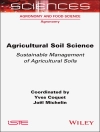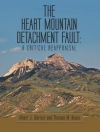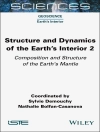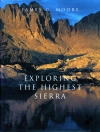Applying tools for data analysis to the rapidly increasing volume of data about the Earth
An ever-increasing volume of Earth data is being gathered. These data are ‘big’ not only in size but also in their complexity, different formats, and varied scientific disciplines. As such, big data are disrupting traditional research. New methods and platforms, such as the cloud, are tackling these new challenges.
Big Data Analytics in Earth, Atmospheric, and Ocean Sciences explores new tools for the analysis and display of the rapidly increasing volume of data about the Earth.
Volume highlights include:
* An introduction to the breadth of big earth data analytics
* Architectures developed to support big earth data analytics
* Different analysis and statistical methods for big earth data
* Current applications of analytics to Earth science data
* Challenges to fully implementing big data analytics
The American Geophysical Union promotes discovery in Earth and space science for the benefit of humanity. Its publications disseminate scientific knowledge and provide resources for researchers, students, and professionals.
Find out more in this Q&A with the editors.
İçerik tablosu
Contributors vii
Preface xiii
1 An Introduction to Big Data Analytics 1
Erik Hoel
Part I: Big Data Analytics Architecture 29
2 Introduction to Big Data Analytics Architecture 31
Thomas Huang
3 Scaling Big Earth Science Data Systems Via Cloud Computing 35
Hook Hua, Gerald Manipon, and Sujen Shah
4 NOAA Open Data Dissemination (Formerly NOAA Big Data Project/Program) 65
Adrienne Simonson, Otis Brown, Jenny Dissen, Edward J. Kearns, Kate Szura, and Jonathan Brannock
5 A Data Cube Architecture for Cloud-Based Earth Observation Analytics 95
Peter Wang, Robert Woodcock, Ronnie Taib, Matt Paget, and Alex Held
6 Open Source Exploratory Analysis of Big Earth Data With Nexus 115
Thomas Huang, Edward M. Armstrong, Nga T. Chung, Eamon Ford, rank R. Greguska III, Joseph C. Jacob, Brian D. Wilson, Elizabeth Yam, and Alice Yepremyan
7 Benchmark Comparison of Cloud Analytics Methods Applied to Earth Observations 137
Christopher Lynnes, Michael M. Little, Thomas Huang, Joseph Charles Jacob, Chaowei Phil Yang, Mahabaleshwara Hegde, and Hailiang Zhang
Part II: Analysis Methods for Big Earth Data 153
8 Introduction to Analysis Methods for Big Earth Data 155
Christopher Lynnes
9 Spatial Statistics for Big Data Analytics in the Ocean and Atmosphere: Perspectives, Challenges, and Opportunities 159
Kevin A. Butler and Tiffany C. Vance
10 Giving Scientists Back Their Flow: Analyzing Big Geoscience Data Sets in the Cloud 177
Niall Robinson, Theo Mc Caie, Jacob Tomlinson, Alex Hilson, Tom Powell, Rachel Prudden, Megan Fitzsimon, and Alberto Arribas
11 The Distributed Oceanographic Match-Up Service 195
Shawn R. Smith, Mark A. Bourassa, Jocelyn Elya, Thomas Huang, Kevin Michael Gill, Frank R. Greguska III, Nga Chung, Vardis Tsontos, Benjamin Holt, Thomas Cram, and Zaihua Ji
Part III: Big Earth Data Applications 221
12 Introduction to Big Earth Data Applications 223
Christopher Lynnes and Tiffany C. Vance
13 Topological Methods for Pattern Detection in Climate Data 227
Grzegorz Muszynski, Vitaliy Kurlin, Dmitriy Morozov, Michael Wehner, Karthik Kashinath, and Prabhat Ram
14 Exploring Large Scale Data Analysis and Visualization for Atmospheric Radiation Measurement Data Discovery Using No SQL Technologies 243
Bhargavi Krishna, Kyle Dumas, and Giri Prakash
15 Demonstrating Condensed Massive Satellite Data Sets for Rapid Data Exploration: The MODIS Land Surface Temperatures of Antarctica 259
G. E. Grant, D. W. Gallaher, and Q. Lv
16 Developing Big Data Infrastructure for Analyzing AIS Vessel Tracking Data on a Global Scale 279
Rob Bochenek, Jessica Austin, John-Marc Dunaway, and Tiffany C. Vance
17 Future of Big Earth Data Analytics 299
Christopher Lynnes and Thomas Huang
Index 311
Yazar hakkında
Thomas Huang, NASA Jet Propulsion Laboratory, USA
Tiffany C. Vance, NOAA Integrated Ocean Observing System, USA
Christopher Lynnes, NASA Goddard Space Flight Center, USA (retd.)












